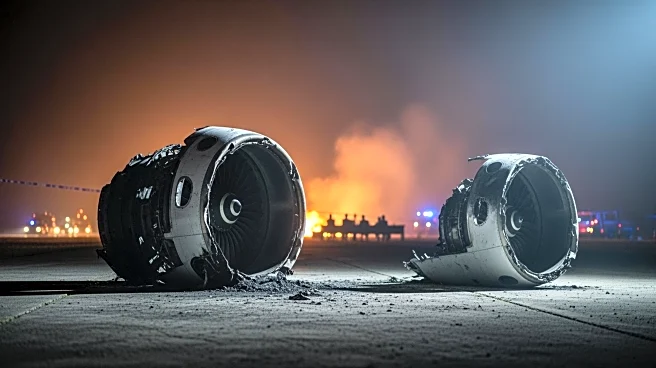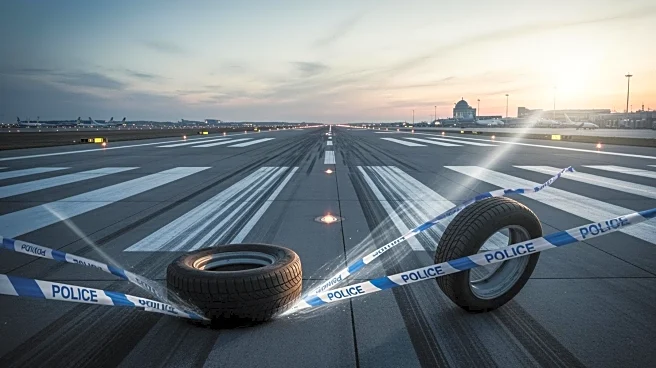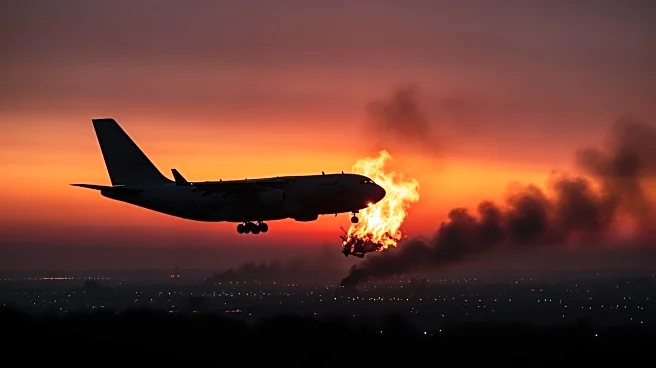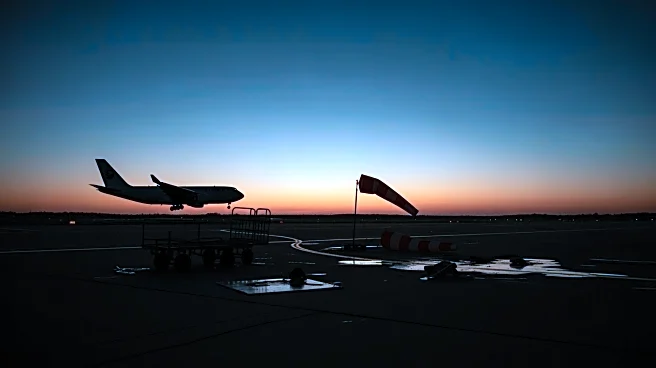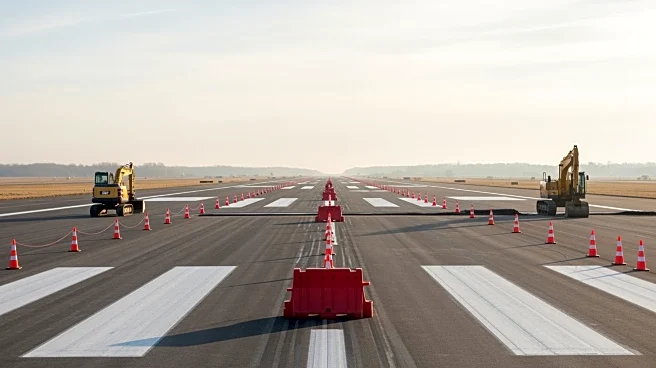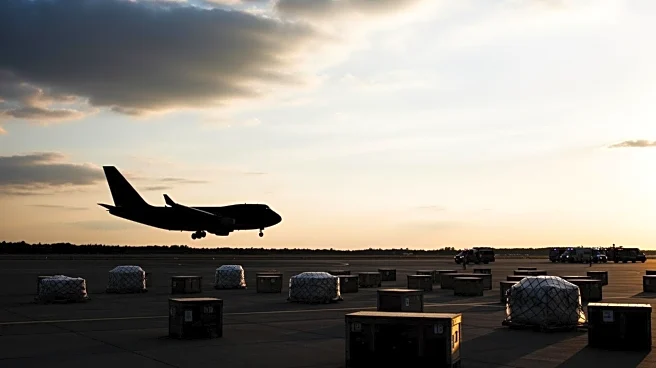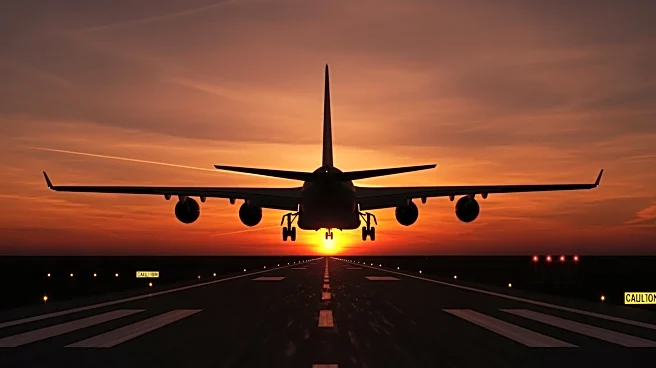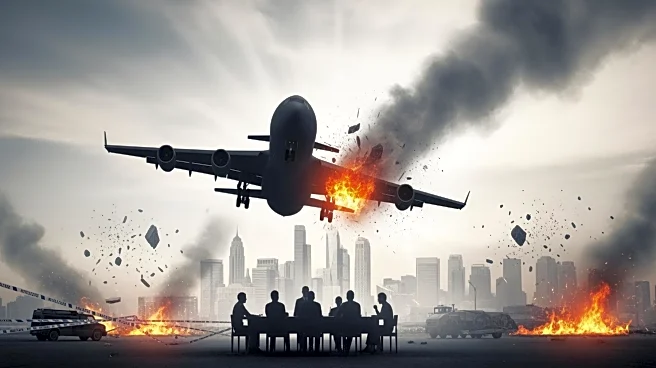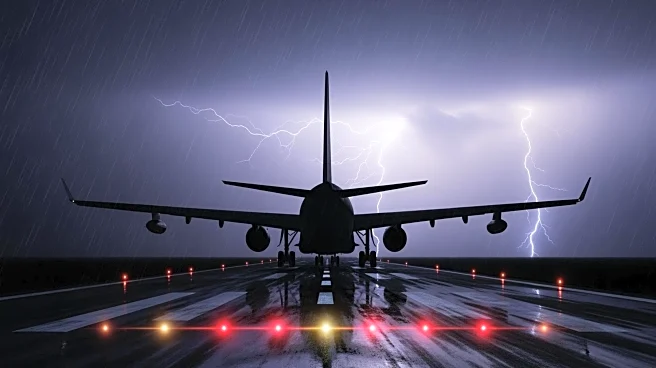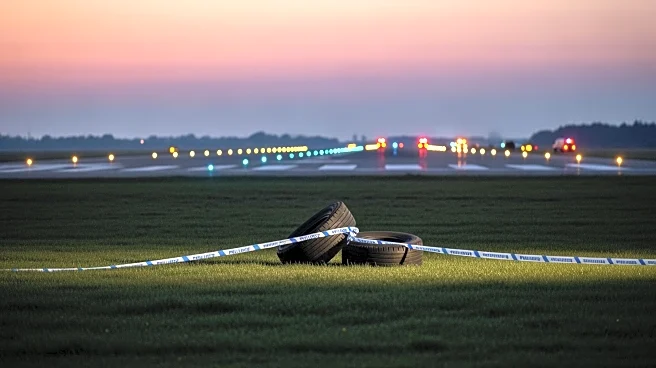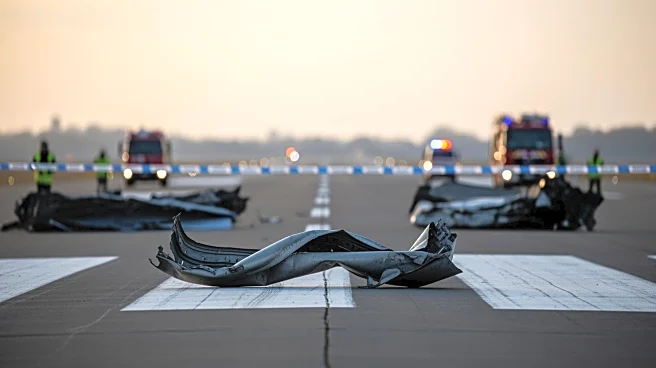What's Happening?
A Boeing 747 cargo plane operated by Air ACT on behalf of Emirates crashed at Hong Kong International Airport. The incident occurred on October 20, 2025, when the aircraft veered off runway 7L and ended up in the sea. The flight, identified as EK9788,
originated from Dubai World Central. During the crash, the plane struck a ground service vehicle, leading to the tragic deaths of two individuals in the vehicle. The flight crew of four survived without serious injuries. The crash happened under normal weather conditions, with no distress calls made by the pilots prior to the incident.
Why It's Important?
This accident highlights significant safety concerns in the aviation industry, particularly for cargo flights. The loss of life underscores the potential risks associated with ground operations at airports. The incident also raises questions about the safety protocols of Air ACT, which has a history of accidents, including a fatal crash in 2017. The investigation by Hong Kong's Air Accident Investigation Authority will be crucial in determining the cause, which could impact future regulatory measures and operational practices in the aviation sector.
What's Next?
The Air Accident Investigation Authority in Hong Kong has initiated an investigation to uncover the causes of the crash. The findings could lead to changes in safety regulations and operational procedures for cargo flights. Stakeholders in the aviation industry, including airlines and regulatory bodies, will be closely monitoring the investigation's outcomes to implement necessary safety improvements and prevent similar incidents in the future.
Beyond the Headlines
This incident may prompt a reevaluation of safety standards for cargo airlines, especially those with previous safety issues. It also highlights the need for improved coordination between air and ground operations at airports to prevent such accidents. The broader implications could include increased scrutiny of cargo airline operations and potential changes in international aviation safety regulations.
